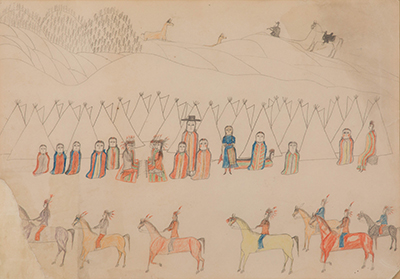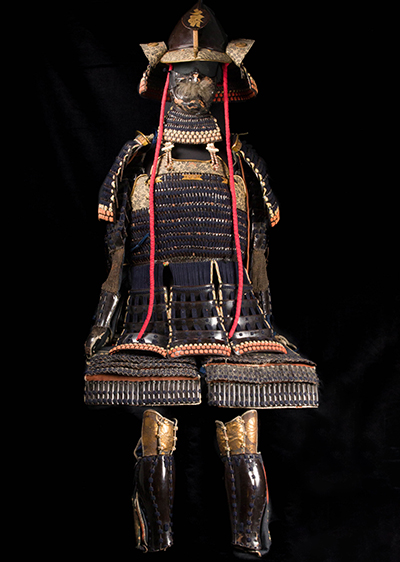Community of Curators Selects Works for New UM Museum Opening
MISSOULA – Last summer, with construction in full swing for the new Montana Museum of Art and Culture building, a group of volunteers gathered on the University of Montana campus to start selecting pieces for the very first exhibition.
It was a Herculean task by any measure. Not only did their final selection need to represent the breadth and depth of the MMAC’s Permanent Collection, it also needed to be considerably smaller – 350 to 400 pieces pulled from a 11,000-plus collection, the state’s largest and most comprehensive, assembled over 128 years.
The group of community curators – dubbed “MoM” for MMAC on the Move – met weekly, and the discussions were “rich, free-wheeling and occasionally peppered with disagreements,” said MMAC Director, H. Rafael Chacón. “In the end we always agreed on the works we selected – both the masterpieces and the more obscure things.”

The first work of art in the MMAC’s Permanent Collection – believed to have been acquired in 1902 and called “Hunting Party” – will be part of the opening exhibit. It was drawn in ledger art-style by a Nez Perce named Philip John.
Community curator programs are growing in popularity as museums strive to create exhibitions that resonate and reflect the people and regions that surround them.
“It’s not that museums today don’t value the voices of curators and traditional authorities, but it is a question of inclusivity and openness,” said Chacón. “As a public institution, it is incumbent on us to open up the curating process to the communities we serve. We benefit tremendously from the wisdom and knowledge that exists in our community, and folks, in turn, have greater stake in our collections and how we interpret them.”
The first exhibition for the new MMAC is structured along seven themes: “Beliefs,” “Origins,” “Conflict,” “Harmony,” “The People,” “The Land” and “Beauty.”
As part of their assignment, Chacón gave committee members the task of selecting 10 works for each theme. The 10 had to include at least one female artist, a work by either a UM student or faculty member, a piece from beyond the American and European traditions, and a work in ceramic because the MMAC has such a prominent collection in that medium.
MoM member Dagny Walton tackled the project by methodically going through the MMAC online database looking at countless images from the collection.
“I was new to the committee at the time and was probably the least knowledgeable about what we had,” said Walton, who graduated in May with a Master of Fine Arts and is now on the MMAC staff. “For me, it was definitely a crash course.”
Filling some of the themes, such as “Conflict,” was easy, but others like “Origins” got “a bit wobbly,” she added.

This Samurai suit will be one of some 400 pieces on the display when the museum opens in September.
“The Samurai suit that’s in the collection is one that touched on several themes,” Walton said. “Nominally, it’s for ‘Conflict,’ but it could also go easily in ‘Beliefs’ or ‘Beauty.’”
The first work of art in the MMAC’s Permanent Collection, “Hunting Party” – believed to have been acquired in 1902 – also crossed several themes. Drawn in the ledger art-style by a Nez Perce individual named Philip John, “Hunting Party” depicts scenes of Indigenous life at the end of the 19th century, including men playing a stick game, a village council, tipis, warriors and a hunter in uniform.
“Some of our community curators chose it for ‘Conflict’ because it could represent the cultural strife 100 years ago,” said Chacón. “Others chose ‘Origin’ because it’s the first piece of art in the collection, and one chose ‘Harmony’ because it shows the coexistence between place and nature.”
“The selection process certainly generated some deep discussions,” he added.
With close to 400 works now selected, the committee will continue lending input and muscle power as they and other volunteers move and install the MMAC’s Permanent Collection in the new building.
“This exhibit and our move are a community effort,” Walton said. “To see so many people involved is very special.”
Editor's note: The new 17,000 square-foot MMAC building will open to the public in September. The privately funded project is made possible by the generosity of many donors, including a contribution of $12.5 million from longtime UM donors Patt and Terry Payne.
###
Contact: H. Rafael Chacón, Suzanne and Bruce Crocker Director of the UM Montana Museum of Art and Culture, 406-243-2019, rafael.chacon@mso.umt.edu.